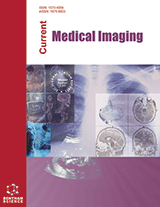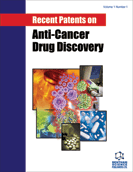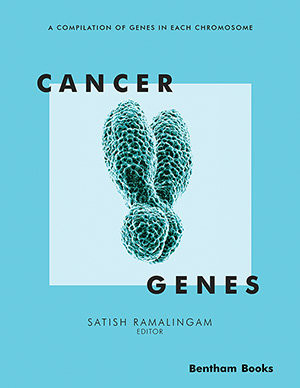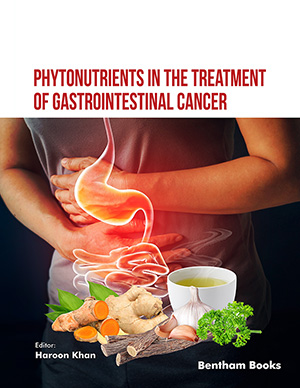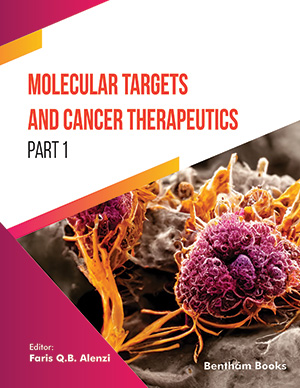
Abstract
Positron Emission Tomography (PET) is increasingly being used in radiotherapy planning, with the development of hybrid imaging technology such as PET/CT allowing more accurate volumes being generated for treatment with external beam radiation. This article will discuss the use of FDG PET in radiotherapy planning of various types of malignancies, as well as some pitfalls and practicalities of integrating PET/CT into radiotherapy planning.
Keywords: PET/CT, radiotherapy planning, FDG, IMRT, head & neck carcinoma, lung carcinoma, gastrointestinal carcinoma, gynaecological carcinoma.
Current Radiopharmaceuticals
Title:The Current Role of PET/CT in Radiotherapy Planning
Volume: 8 Issue: 1
Author(s): Sze Ting Lee and Andrew M. Scott
Affiliation:
Keywords: PET/CT, radiotherapy planning, FDG, IMRT, head & neck carcinoma, lung carcinoma, gastrointestinal carcinoma, gynaecological carcinoma.
Abstract: Positron Emission Tomography (PET) is increasingly being used in radiotherapy planning, with the development of hybrid imaging technology such as PET/CT allowing more accurate volumes being generated for treatment with external beam radiation. This article will discuss the use of FDG PET in radiotherapy planning of various types of malignancies, as well as some pitfalls and practicalities of integrating PET/CT into radiotherapy planning.
Export Options
About this article
Cite this article as:
Lee Ting Sze and Scott M. Andrew, The Current Role of PET/CT in Radiotherapy Planning, Current Radiopharmaceuticals 2015; 8 (1) . https://dx.doi.org/10.2174/1874471008666150316222618
| DOI https://dx.doi.org/10.2174/1874471008666150316222618 |
Print ISSN 1874-4710 |
| Publisher Name Bentham Science Publisher |
Online ISSN 1874-4729 |
 47
47 1
1
- Author Guidelines
- Graphical Abstracts
- Fabricating and Stating False Information
- Research Misconduct
- Post Publication Discussions and Corrections
- Publishing Ethics and Rectitude
- Increase Visibility of Your Article
- Archiving Policies
- Peer Review Workflow
- Order Your Article Before Print
- Promote Your Article
- Manuscript Transfer Facility
- Editorial Policies
- Allegations from Whistleblowers
Related Articles
-
Anticancer Effects of Ginsenoside Rh2: A Systematic Review
Current Molecular Pharmacology Bacterial Peptides and Bacteriocins as a Promising Therapy for Solid Tumor
Current Pharmaceutical Design A Review on Structures and Functions of Bcl-2 Family Proteins from Homo sapiens
Protein & Peptide Letters Progress in the Development of Selective Inhibitors of Aurora Kinases
Current Topics in Medicinal Chemistry Recent Advances in Structural Studies of the Carbonic Anhydrase Family: The Crystal Structure of Human CA IX and CA XIII
Current Pharmaceutical Design Cytotoxicity and Apoptosis Induced by a Plumbagin Derivative in Estrogen Positive MCF-7 Breast Cancer Cells
Anti-Cancer Agents in Medicinal Chemistry Expression of Specificity Protein Transcription Factors in Pancreatic Cancer and their Association in Prognosis and Therapy
Current Medicinal Chemistry Eupatilin Inhibits the Proliferation and Migration of Prostate Cancer Cells through Modulation of PTEN and NF-κB Signaling
Anti-Cancer Agents in Medicinal Chemistry Bone Target Radiotracers for Palliative Therapy of Bone Metastases
Current Medicinal Chemistry Synthesis and Evaluation of <sup>198</sup>Au/PAMAM-MPEG-FA against Cancer Cells
Anti-Cancer Agents in Medicinal Chemistry In Silico Prediction and Validation of Oxygen-Regulated Protein N-myc Downstream Regulated Gene 3 and Virtual Screening of Competitive Inhibitors of L-Lactate as Therapeutics
Letters in Drug Design & Discovery Effects of Diet-Derived Molecules on the Tumor Microenvironment
Current Angiogenesis (Discontinued) Synthesis and Biological Evaluation of New Piperazine Substituted 3, 5-Diarylisoxazolines
Current Organic Synthesis The Voyage of Natural Chalcone: Isoliquiritigenin
Current Bioactive Compounds Lipid Nanoformulations for Oral Delivery of Bioactives: An Overview
Current Drug Therapy Polyvalent AIDS Vaccines
Current HIV Research Perspectives of Genome-Editing Technologies for HIV Therapy
Current HIV Research Human Apurinic/Apyrimidinic Endonuclease (APE1): An Emerging Anti-Cancer Biomarker
Recent Patents on Biomarkers Review of Chemoradiotherapy for High-Risk Prostate Cancer
Reviews on Recent Clinical Trials The mRNA-HPV Test Utilization in the Follow Up of HPV Related Cervical Lesions
Current Pharmaceutical Design











